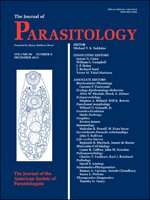Notoedric mange was responsible for a population decline of bobcats (Lynx rufus) in 2 Southern California counties from 2002–2006 and is now reported to affect bobcats in Northern and Southern California. With this study we document clinical laboratory and necropsy findings for bobcats with mange. Bobcats in this study included free-ranging bobcats with mange (n = 34), a control group of free-ranging bobcats without mange (n = 11), and a captive control group of bobcats without mange (n = 19). We used 2 control groups to evaluate potential anomalies due to capture stress or diet. Free-ranging healthy and mange-infected bobcats were trapped or salvaged. Animals were tested by serum biochemistry, complete blood count, urine protein and creatinine, body weight, necropsy, and assessment for anticoagulant rodenticide residues in liver tissue. Bobcats with severe mange were emaciated, dehydrated, and anemic with low serum creatinine, hyperphosphatemia, hypoglycemia, hypernatremia, and hyperchloremia, and sometimes septicemic when compared to control groups. Liver enzymes and leukocyte counts were elevated in free-ranging, recently captured bobcats whether or not they were infested with mange, suggesting capture stress. Bobcats with mange had lower levels of serum cholesterol, albumin, globulin, and total protein due to protein loss likely secondary to severe dermatopathy. Renal insufficiency was unlikely in most cases, as urine protein:creatinine ratios were within normal limits. A primary gastrointestinal loss of protein or blood was possible in a few cases, as evidenced by elevated blood urea nitrogen, anemia, intestinal parasitism, colitis, gastric hemorrhage, and melena. The prevalence of exposure to anticoagulant rodenticides was 100% (n = 15) in bobcats with mange. These findings paint a picture of debilitating, multisystemic disease with infectious and toxic contributing factors that can progress to death in individuals and potential decline in populations.
How to translate text using browser tools
1 December 2013
Serum Chemistry, Hematologic, and Post-Mortem Findings in Free-Ranging Bobcats (Lynx rufus) With Notoedric Mange
Laurel E. K. Serieys,
Janet Foley,
Sean Owens,
Leslie Woods,
Erin E. Boydston,
Lisa M. Lyren,
Robert H. Poppenga,
Deana L. Clifford,
Nicole Stephenson,
Jaime Rudd,
Seth P. D. Riley
ACCESS THE FULL ARTICLE

Journal of Parasitology
Vol. 99 • No. 6
December 2013
Vol. 99 • No. 6
December 2013




